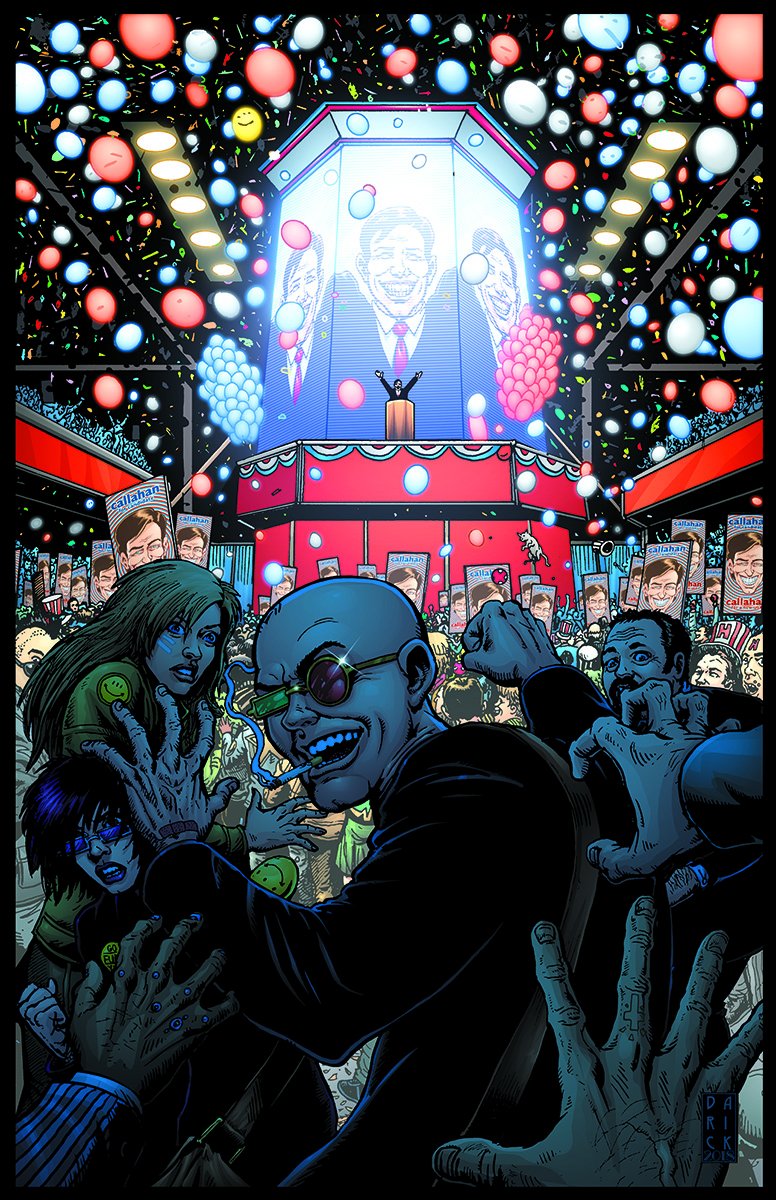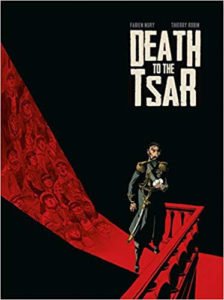Writer: Warren Ellis
Artist: Darick Robertson
Vertigo Comics / DC Black Label
GOOD NEWS: Absolute Transmetropolitan, Volume 3, was released in November 2018. In the beginning, when Spider Jerusalem got a call from the city saying he owed a book on politics, and another one too, or goodbye paycheck, he was a hairy hilltop country freak with a gun holding off fans and neighbors with a diminishing supply of bullets. Nature sucked, but it was better than the city. So opened the origin story for a creepy writer as superhero.

Transmetropolitan launched monthly in 1997, and lasted five years, charting Spider’s return to the city to bring us truth and light in 60 issues, seeing him move into ever grander digs with security systems and two chicks as assistant and bodyguard. Spider is an investigative reporter digging into slimy politics and dangerous frauds. By the second year, good old Spider is beloved of the people and the girls, though many, along with the girls, want to kill him. “Nothing like working for that horrible little bastard,” says one, “makes me feel alive.”
As evil gains the upper hand, about where the Absolute edition Volume 2 brings us at the end, Spider finds ways to speak, and saves his editor. “I’m not back to have fun, oh no. I’m back to do business,” he assures us in that intimate tone he often adopts. The heroic investigative reporter as an icon has many facets and prior models, most notably in Naomi Klein who emerged in 1997 as a blockbuster contemporary to the bald headed man with a spider tattooed on his forehead, bringing us light.
The power of words is the message, the light of truth, like it matters. Transmetropolitan contains some bleak hope. No matter if one is overcome savaging the moment, to pause, and fade. This message emerges poignantly in the story “Here to go” from Volume 2, a soliloquy with Spider: used to be he thought people were worth it. Anyway, in the end, much as we want to find things better at last, we are only here to go. Damn.

Spider captured me early on, in “Another cold morning” as the story drew back to show him in an armchair hunched over a keyboard in a cluttered room finishing; then he leans back to look at it, inhales a smoke, and rises to his feet arms outstretched, and exhales in triumph. Too real. Tore a sob from my throat.
The artwork often leads the poetry, and in all creates the environment that makes Spider possible. I think only this collaboration of minds could give this persona the ground to exist so exultantly. Writer Ellis rises like an unhappy god of the wood to address the people. Granted, Warren Ellis is a cool writer, but where does this courage come from? I think Darick Robertson’s art gave him an incubator.
The art format continually changes and always crowds the page. The Absolute edition finally gives this art the room to breathe it demanded from the first. How much the Transmetropolitan world actually resembles the future now or as it will be is beside the point. The drama is all metaphor like all other dramas, a lust for life paralleling our own.
A remarkable point in the Transmetropolitan story is the cult-like attention to Spider’s person and personal drama. On reflection, the name itself suggests a queer association. Spider Jerusalem resonates as a name and as a towering paragon of righteous philosophy for the masses, a new religion, a naked light to burn away “the grime, and the sadness, and the fear” as the name and person of Professor Diogenes Teufelsdreck resonates, too, in Thomas Carlyle’s Sartor Resartus, from 1831. Teufelsdreck’s name translates as “god-given devil’s dung,” the dung part referring to the strong language of Martin Luther to deflect the taunts of Satan. Carlyle admired Luther, and used strong language himself. Spider Jerusalem may be what our new prophets will look like. As the girls said, he’s a bastard, but he makes you feel alive.
Now, which way is Satan? Tune in to Absolute Transmetropolitan, Volume 3 for the climax.
[Editor’s note: Absolute Transmetropolitan Volume 3 collects Transmetropolitan #40-60.

